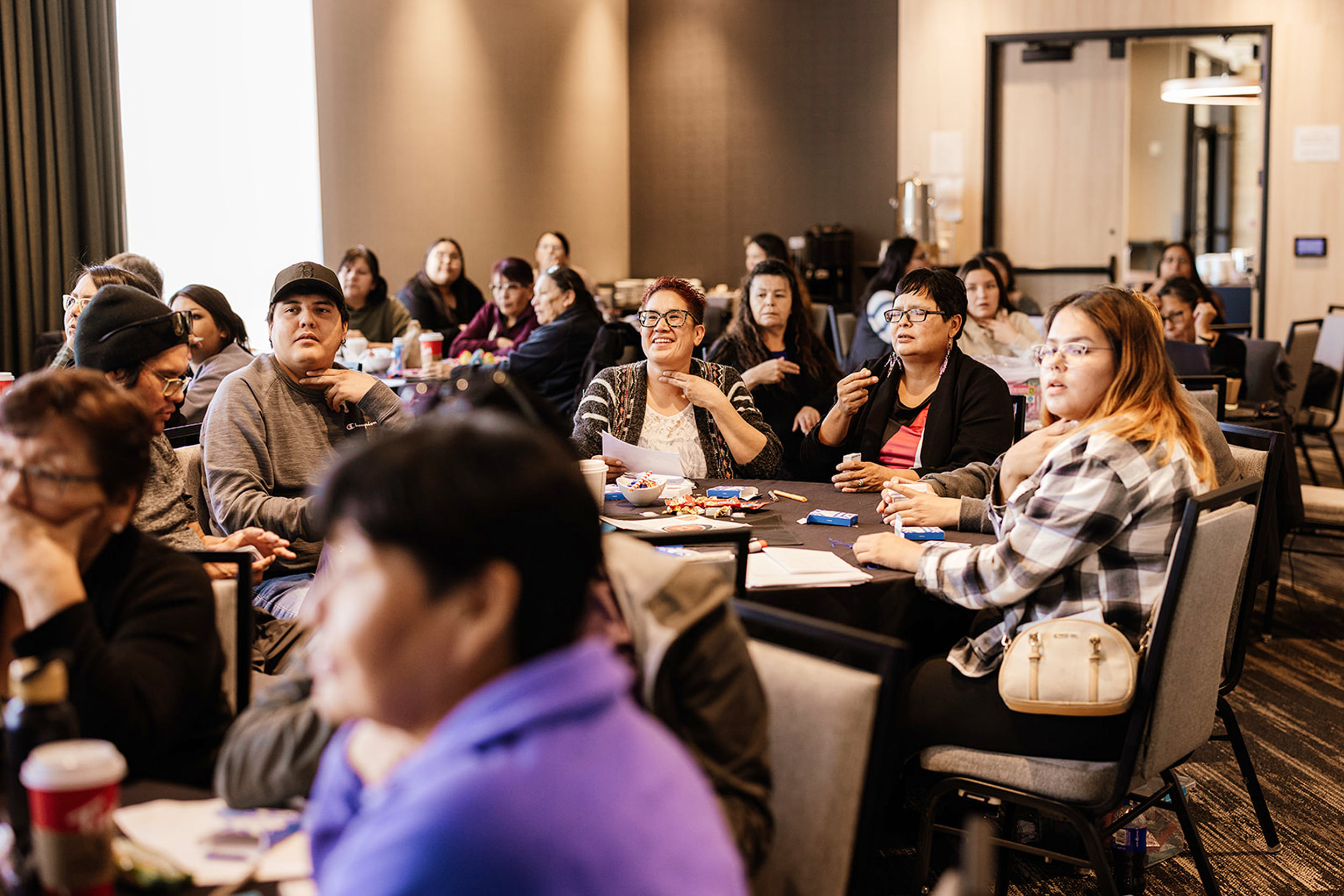/ SPEECH SERVICES
NVSS School Speech Programs
Breaking down distance barriers to ensure consistent, intensive, and in-person speech therapy is accessible to students, everywhere!
At NVSS we’re transforming the way speech therapy reaches remote schools across the province.
Our progressive framework replaces outdated models, ensuring students with communication challenges are supported early and effectively!
EACH PROGRAM INVOLVES:
In-person speech screens to support early identification of students with communication difficulties.
Individualized therapy plans tailored to each student’s unique needs and goals.
Extensive staff training to build the skills and confidence needed to effectively support students.
All necessary materials and resources to deliver structured, evidence-based intervention.
Home-programming to provide families with tools and guidance to support speech development beyond the classroom.
On-going staff support to ensure long-term success.

BENEFITS OF EARLY INTERVENTION
The ability to communicate effectively is the very foundation of a child’s overall development and academic achievement - early speech intervention is crucial!
Difficulties early on can have a cascading effect on the rest of a child’s life, therefore, the earlier support is provided, the better the outcomes. If speech and language skills are not acquired in these critical early years, the gap between proficient and poor speakers will continue to widen. In fact, a slow start out of the gate will mean playing catch up for years to come – let’s get ahead and provide our children with the support they deserve!
OUTDATED APPROACHES TO SPEECH THERAPY CONTINUE TO LEAVE GAPS
TELETHERAPY
-
Teletherapy refers to a model of delivering speech-language services through online video conferencing rather than in person. This approach became increasingly common as a way to address distance barriers in remote communities.
While teletherapy can be an innovative option in certain cases – especially for older students or those with more developed language skills – it isn’t ideal for most young learners. Children with limited attention spans, or those experiencing developmental, cognitive or speech/language delays require highly engaging, in-person support that is challenging to replicate through a screen. -
REDUCED ABILITY TO ASSESS SPEECH PRODUCTION
Clinicians are limited by camera angles, lighting, and video quality, which can compromise their ability to accurately observe the presence, strength, and coordination of a child’s articulators. Subtle distortions in sound and visibility are common over video, making it difficult to assess the fine motor movements involved in speech.LIMITED ATTENTION AND ENGAGEMENT
Young children often have shorter attention spans and may struggle to remain focused during virtual sessions. Without the physical presence of a clinician to guide them, many students become distracted or disengaged. This can limit the effectiveness of therapy and make it difficult to complete meaningful practice within a session.
LESS INTERPERSONAL CONNECTION
One of the most impactful components of speech therapy is the opportunity to build a child’s communication skills. This goes beyond speech sound practice and includes abilities like conversational turn-taking, reading body language, shared attention, and emotional connection. These every day skills form the foundation for successful communication and are difficult to develop through a screen. In-person interactions provide natural opportunities for children to observe, practice and grow these abilities in meaningful ways.LOSS OF TACTILE AND VISUAL CUES
In person speech therapy allows clinicians to use a wide range of visual and tactile cues to help children understand how to produce sounds. Over video, many of these supports are limited or lost entirely, reducing the effectiveness of instruction.
TECHNOLOGY GAPS
Reliable internet and up-to-date devices are essential for virtual therapy – but not always available in school settings. Many remote communities face frequent connectivity issues, outdated hardware, and lack of access to tech support. These challenges cause lag, dropped sessions, or poor audio/video quality, all of which interrupt the flow of therapy. Even when students are engaged, technology itself can become a barrier to effective support.
DISCONNECTION FROM SCHOOL CULTURE AND CONTEXT
Teletherapists often lack familiarity with a school’s rhythm, routines, and relationships, making it harder to deliver responsive, community-based care.
CONTRACTED SPECIALISTS
-
Contracted speech-language pathologists often travel to remote schools to conduct evaluations and identify students exhibiting speech and language difficulties. Reports outlining areas of need are then issued, including guidance on how to support the child. Unfortunately, due to far distances, large caseloads, and a shortage of professionals, intensive, on-going service provision for any given student is rarely achieved.
“Communities noted that referrals for services often set parents up with a false expectation that services would be delivered to their child, when in fact, long wait lists and geographic inaccessibility of services can mean that there is no follow-up.” (Ball and Janyst, 2007) -
Reduced access to speech therapy is a long-standing problem. Financial and geographic factors as well as difficulty recruiting and retaining professionals serve as barriers preventing many communities from acquiring sufficient service provision.
Infrequent visits place heavy time constraints on what can be offered. In most cases, contractors are limited to administering evaluations and issuing reports, with recommendations for school staff/families to interpret, understand, and execute. Yet speech therapy requires precise techniques, a trained ear, and deep clinical knowledge, making it unfair to expect untrained individuals to provide effective intervention without ongoing support.
The unfortunate reality is: previous models of contracting specialists have left professionals struggling to balance quantity and quality of service provision… often coming up short on both ends.
“The term ‘triage’ should refer to who gets support first …not who gets support.”
- Northern Voices Speech Services

Communication is an exchange
of information.
Connection is an exchange
of our humanity.
SEAN STEPHENSON

HELP YOUR STUDENTS FIND THEIR VOICES
Let’s Work Together!
Request a custom proposal. It’s time we give our children the support they deserve.











